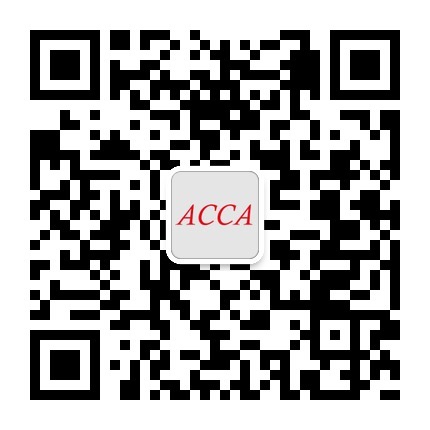| ACCA网络课程 | 课程专业名称 | 讲师 | 试听 |
 85%的人正在学习该课程 85%的人正在学习该课程 | ACCA 全维度网课体验课程 实景课堂与独立录制 覆盖所有知识点,根据学习计划推进学习进度 | 高顿名师 |  |
 70%的人正在学习该课程 70%的人正在学习该课程 | ACCA网课全科卡(8.2折) 为零基础刚开始学习ACCA的学员特别定制 | 高顿名师 |  |

| ACCA网络课程 | 课程专业名称 | 讲师 | 试听 |
 85%的人正在学习该课程 85%的人正在学习该课程 | ACCA 全维度网课体验课程 实景课堂与独立录制 覆盖所有知识点,根据学习计划推进学习进度 | 高顿名师 |  |
 70%的人正在学习该课程 70%的人正在学习该课程 | ACCA网课全科卡(8.2折) 为零基础刚开始学习ACCA的学员特别定制 | 高顿名师 |  |

1、凡本网站注明“来源高顿教育”或“来源高顿网校”或“来源高顿”,的所有作品,均为本网站合法拥有版权的作品,未经本网站授权,任何媒体、网站、个人不得转载、链接、转帖或以其他方式使用。
2、经本网站合法授权的,应在授权范围内使用,且使用时必须注明“来源高顿网校”或“来源高顿”,并不得对作品中出现的“高顿”字样进行删减、替换等。违反上述声明者,本网站将依法追究其法律责任。
3、本网站的部分资料转载自互联网,均尽力标明作者和出处。本网站转载的目的在于传递更多信息,并不意味着赞同其观点或证实其描述,本网站不对其真实性负责。
4、如您认为本网站刊载作品涉及版权等问题,请与本网站联系(邮箱fawu@gaodun.com,电话:021-31587497),本网站核实确认后会尽快予以处理。
ACCA《AA审计与认证业务》详细介绍,一文完全了解!ACCA考试中有很多不同的科目,同学们报考一门科目之前最好要了解一下该科目的具体情况,学姐就来为...
2023-03-17ACCAF阶段科目介绍,全科难度排序来了!ACCA考试一直都是大家比较好奇的证书考试,关于这项考试,科目数量是比较多的,而且分为不同的部分,很多同学...
2023-03-15ACCAF阶段学多久?学姐经验分享!关于ACCA考试,很多同学在报考之后对于学习都一筹莫展,不知道备考的方法和技巧,学姐帮大家整理了部分学习经验,赶...
2023-03-10ACCAF阶段:LW《公司法与商法》科目介绍!对于ACCA的各项科目不了解的同学看过来,学姐带来了F4科目的详细分析,如果想深入了解这门科目,那就赶快来看...
2023-02-28ACCAF阶段科目先考哪个好?报考要注意什么?对于想要报考ACCAF阶段科目的考生来说,要面对三个选择,首先是先考哪个科目好,其次是报考顺序,而后就是...
2023-02-15ACCAF8怎么学?备考经验总结!ACCA的F8科目是《审计与认证业务Audit and Assurance》,对于没有审计经验的小伙伴来说,学习的难度是比较高的,学姐整理了备考...
2023-01-18很多小伙伴在考试之前一定不知道,ACCA考试其实是有出现原题的可能性的,前提是你进行大量的习题刷题,因此就有小伙伴问学姐了,ACCAf1考试有原题多不...
2022-10-19众所周知ACCA考试科目多,很多小伙伴可能是第一次参加ACCA考试,因此对ACCA科目内容还不太了解。ACCA科目分为f阶段、p阶段和选修科目。那么今天学接就给...
2022-10-11ACCA考试科目多,很多小伙伴可能是第一次参加ACCA考试,因此对ACCA科目内容还不太了解,我们都知道ACCA科目分为f阶段、p阶段和选修科目。那么今天学接就...
2022-10-11在上海读ACCA专业的就业前景如何?报名条件是什么?ACCA是英国本土的跨及时证书,在国内乃至全球的权威性都是很高的,所以每年保卡ACCA考试的人都非常...
2022-10-0963题E选项为何不选啊!持有公司发行股份5%前五名股东单位任职人员不能担任,10%已经大于5%不是应该能担任吗?如果不能担任,范围是多少
资本公积的计算过程不理解
B为什么不对呢
老师:可以分别和我说一下: 1.非货币性资产交换:双方的入账价值和差额怎么确认吗 2.债务重组的:双方入账价值和差额分别怎么确认 3.长期股权投资:初始投资成本,初始入账价值 这几个概念经常弄晕
77题C选项不是应该1%,为什么C正确
63题E选项为何不选啊!持有公司发行股份5%前五名股东单位任职人员不能担任,10%已经大于5%不是应该能担任吗?如果不能担任,范围是多少
资本公积的计算过程不理解
B为什么不对呢
老师:可以分别和我说一下: 1.非货币性资产交换:双方的入账价值和差额怎么确认吗 2.债务重组的:双方入账价值和差额分别怎么确认 3.长期股权投资:初始投资成本,初始入账价值 这几个概念经常弄晕
77题C选项不是应该1%,为什么C正确
高顿网校小编*7给大家总结了12月F5、F8、F9的ACCA考官报告。 F5 Performance Management June 2015 pass rate 37% F5 candidates must learn to stand back and look at the big picture in questions at this level, says the latest Examiners Report (for June). If you can learn to do this it will serve you well when moving on to the professional level papers. It seems many students struggled .........
2015-12-08F8 EXAMINERS REPORT - September The examiner was pleased that most candidates attempted all the MCQ questions. Candidates preparing for December have been advised to work through the pilot paper, past exam papers and the two sample questions in the September report itself. The six written questions in Septembers section B tested: Audit framework and regulation. Planning and risk assessment. Intern.........
2015-11-10F7 EXAMINERS REPORT - September The examiner felt the performance at the first-ever September sitting was generally good and encouraging. The report stresses that an appropriate level of workings supports good answers and allows markers to understand how answers have been arrived at excessively long and absent workings do not allow that to happen. There is concern that a significant number of cand.........
2015-11-10高顿网校小编知道各位学员最喜欢考试前划重点啦~今天我们来划呀划划一划ACCA F7财务报告的重点! These exam tips must not be relied on totally. To increase chances of success in Exams you must prepare full breadth of syllabus and topics ACCA F7 Exam Tips: ACCA F7 Financial Reporting Paper Exam Tips for December 2015 Session are given below by famous tuition provid.........
2015-11-06下面是高顿网校小编为各位ACCA小主带来了12月Kaplan官方公布的F7考前TIPS。 These exam tips must not be relied on totally. To increase chances of success in Exams you must prepare full breadth of syllabus and topics ACCA F7 Exam Tips: ACCA F7 Financial Reporting Paper Exam Tips for December 2015 Session are given below by famous tuition providers Kaplan MCQs can come from any s.........
2015-11-05ACCA是英国本土的跨及时证书,在国内乃至全球的权威性都是很高的,所以每年保卡ACCA考试的人都非常多。很多人在考虑是否要考之前,也一定很关心持有ACCA证书的就业前景怎么样。那么学姐今天就给大家解答一下:ACCA专业的就业前景如何?报名流程是什么?一起来了解吧~ 一、ACCA专业的就业前景如何?.........
2022-08-26真正的学者真正了不起的地方,是暗暗做了许多伟大的工作而生前并不因此出名。ACCAf5到f9搭配如何搭配更好?还有备考建议送给大家,现在就跟着学姐一起来了解一下吧! 一、ACCAf5到f9搭配如何搭配更好? 首先,大家都知道ACCA一年有4⃣️个考季,每个考季最多报考四门,一年最多报考八门。F1-F4的难度.........
2022-08-26很多小伙伴知道ACCA考试的科目很多,加起来一共有15门之多,那么就有小伙伴有疑问了,这么多考试科目,ACCA要通过多少门才有用?如何申请会员证书?如果刚好也有疑问,那就跟着学姐一起来了解一下吧~ 一、ACCA要通过多少门才有用? 即使ACCA考试只通过一科,对你都是有帮助的!很多公司在招聘时都会.........
2022-08-18很多小伙伴在考试之前一定不知道,ACCA考试其实是有出现原题的可能性的,前提是你进行大量的习题刷题,因此就有小伙伴问学姐了,ACCAf1考试有原题多吗?如何查看考试分数?让我们一起来了解一下~ 一、ACCAf1考试有原题多吗? ACCA机考会考到原题的,但是ACCA FA机考考到原题的概率较小,但考试题的题型.........
2022-08-17ACCA考试每年都四次考试,分别在每年的3月、6月、9月、12月。今年9月的考试报考阶段已经结束,12月的考试报名通道已经开启了,那么12月ACCA报考费用多少钱?报名截止日期什么时候?我们今天一起来了解一下吧! 一、12月ACCA报考费用多少钱? 2022年12月ACCA考试费用具体如下: 1.常规报名费用: F4-F9报名费.........
2022-08-15ACCA证书的含金量很高,每年都有很多考生参加ACCA考试,但是在众多计划参加ACCA考试的人中,还有许多人不知道ACCA的ACCA知识体系是什么?那么学姐今天就给大家进行一个解答,学姐还整理了几点备考攻略,希望可以帮助到大家哦~ 一、ACCA知识体系是什么? ACCA考试科目共15门,分为三部分,分别是:知识模.........
2022-08-15了解ACCA的小伙伴应该都知道啦,标题说的ACCA前四课其实就是ACCA考试中,F阶段的课程,那么作为大家参加ACCA考试时首先接触的科目内容,ACCA前四科考试时间是什么时候呢?后边还有考试攻略!一起来了解! 一、ACCA前四科考试时间 ACCA随机机考是F1-F4课程考试,ACCA季度考试是F5-F9和P阶段课程考试。ACCA随机.........
2022-08-159月的ACCA考试报考阶段已经结束了,很多小伙伴已经报考成功并且早早进入备考阶段,但是对于第一次接触ACCA考试的小伙伴而言,可能还不知道考试时间以及成绩公布的时间,那么学姐今天就给大家解答一下:9月ACCA的F2考试时间是什么时候?什么时候出成绩?一起往下看吧! 一、9月ACCA的F2考试时间 9月.........
2022-08-12ACCA的含金量很高,考到证书后可以到很多知名的企业工作,于是就有小伙伴比较好奇了,ACCA考下来薪资有多少?可以做哪些工作?那么学姐今天就来给大家解答一下,希望可以帮助到大家哦~ 一、ACCA考下来薪资有多少 不少国内生产企业国际的大型互联网时代金融产品服务机构认可ACCA资格人才,ACCA持证人.........
2022-08-08ACCA的考试科目多,加起来一共有15门课程,考试只要通过了13门课程就可以申请ACCA证书,ACCA考试也分为阶段和P阶段,F阶段作为大家考试时接触的第一个阶段,很多小火把对此也会很担心,那么对于ACCAF阶段的难度大吗?考多少分算通过?这两个问题,学姐今天就给大家进行解答,希望可以帮助到你们。.........
2022-08-08